Stories From Our Past
Coffee Lodge, Miss Sharp and a Teapot: Temperance and Philanthropy in Tackley
John Perkins, June 2020
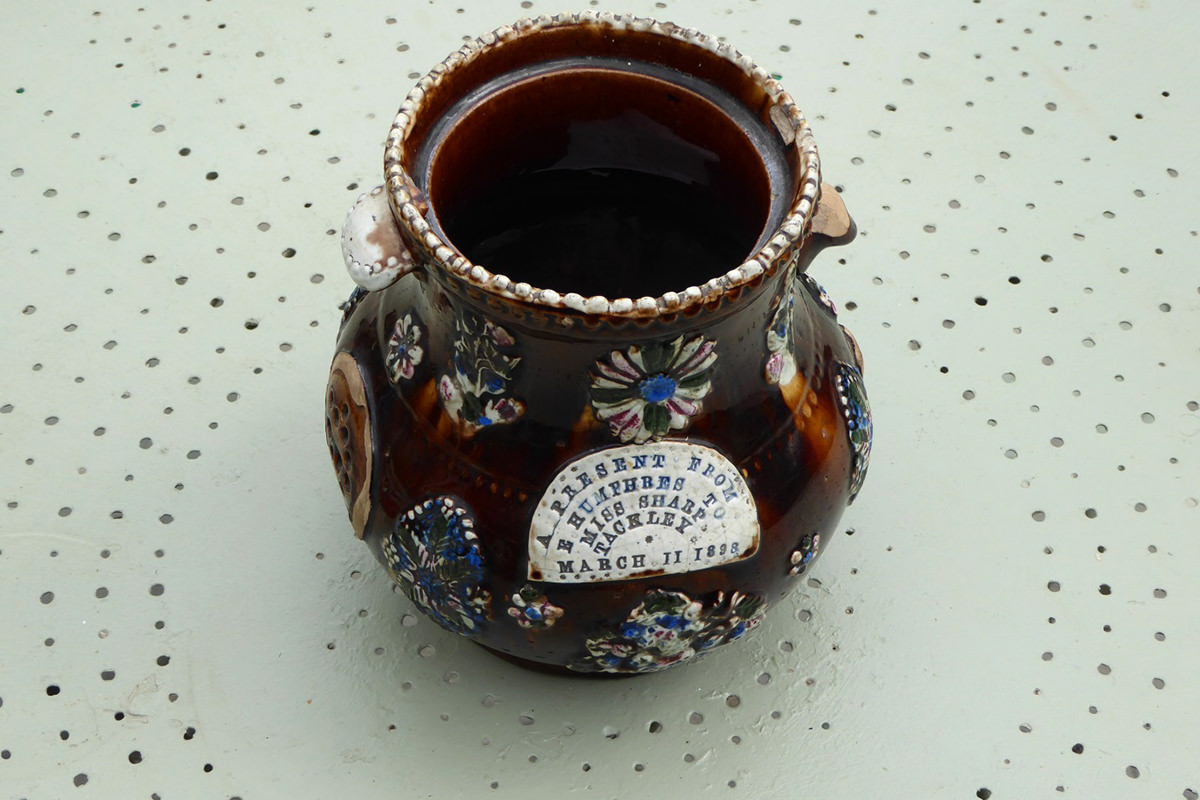
Simon Somerscales found this Measham Ware teapot in a Kidlington charity shop several years
ago. It tells an interesting story of temperance, religion, philanthropy and social attitudes in
our village at the end of the 19th century. The starting point is Kelly’s Directory of
Oxfordshire. The volumes for 1895–98 have entries for a Miss Sharp at Coffee Lodge, now
25 Nethercote Road.
Coffee Lodge
Ada Madeleine Sharpe (not Sharp) was the daughter of Lancelot Arthur Sharpe (1806–91), rector
of Tackley from 1839 until his death. She established the ‘Welcome’ Coffee Lodge in 1880 in
order to “benefit… the lads and men of Tackley by providing a coffee and reading room where they
are ‘welcome’ to spend their evenings free of any expense and with all kinds of games…”
(Bicester Herald, 29/4/1892; Oxford Journal, 30/12/1899). The first
explicit mention of the lodge is an advert (Oxfordshire Weekly News, 10/1/1883) for
a ventriloquism performance with tickets available from the rectory, the Post Office and the
‘Welcome’ coffee room.
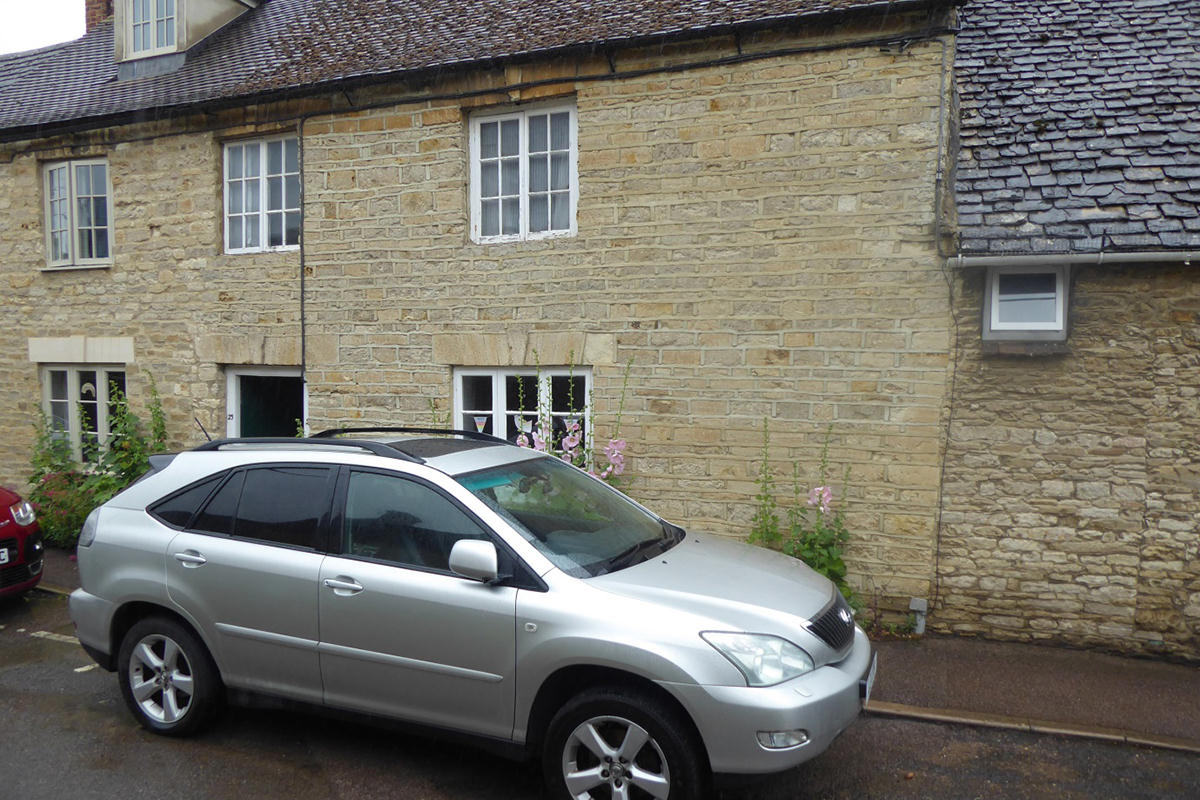 Coffee Lodge, 25 Nethercote Road today
Coffee Lodge, 25 Nethercote Road today
In 1890/91, around the time of her father’s death (on 12 February 1891), she said that she had
spent £600 on improving Coffee Lodge — equivalent to £77,500 today! On 3 and 4 April, 1891 she
organised a rag fair at St Edburg’s Hall, Bicester, to sell bric-a-brac with the proceeds being
in aid of temperance work in Tackley, specifically the Tackley Coffee Lodge Improvement Fund
(Bicester Herald, 27/3/1891, 10/4/1891). She also got her friends in other parts of
the country to sell devotional pamphlets that she had written, including one titled
Village Gossip Investigated, published under the pseudonym A. Bird, with proceeds
going to the coffee shop: see the many adverts in 1891 in the Hastings and St Leonard’s
Observer, e.g. for 3/10/1891. She organised another rag fair in Bicester in April 1892 in
aid of the debt on the enlargement of the ‘Welcome’ Coffee Lodge (Bicester Herald,
29/11/1892), and a third in November for benefiting the ‘Coffee Tavern’ in the coming winter
(Oxford Journal, 19/11/1892). She seems to have got her money back.
In 1894 she organised a ‘supper and smoker’ at the lodge which was attended by about 80 “lads
and a few old men” who were given a substantial supper including a large joint of beef and a
large leg of lamb. It’s difficult to see how the building could accommodate 80 people sitting
down to supper. After supper came games and songs, including renditions by “Messrs A.J. Eborne,
C.W. Leavey, W. Skidmore, P. Paine, R. Calcott, etc.” some of whom were from well-known Tackley
families (Oxfordshire Weekly News, 3 January 1894). The Christmas dinner became an
annual event. She organised her last one on Boxing night 1899 for about 30 people, who received
presents of tobacco from Dr Elsmore of Woodstock as he had done in previous years, with a lucky
few also finding sixpences in the plum pudding. After dinner and songs she thanked everyone for
supporting the coffee room and shop for twenty years, and announced that she was giving
up running it and had found a suitable successor — their name is not mentioned in the report,
nor, unfortunately, is there any further information on the shop and what it sold. T.J. Hoare
replied to the speech and the evening ended as usual with singing the carol
In Excelsis Gloria.
Tackley and Temperance
The alternative name ‘Coffee Tavern’ indicates that the lodge’s origin was in the temperance
movement, and Miss Sharpe founded it in 1880 at the height of the movement’s activity in Tackley
which was led by the Church of England Temperance Society (CETS) and the Band of Hope. On 21
April 1882 a petition from Tackley opposing the sale of intoxicating liquors on Sunday was
presented to the House of Commons (Bicester Herald, 28/4/1882).
From 1880, monthly meetings were held and a series of monthly winter concerts, organised by the
CETS, were given by the St Nicholas’ church choir – which Miss Sharpe ran – and by local
performers (Oxford Times, 3/1/1880, 6/11/1880, 19/2/1881, 8/10/1881, 22/10/1881;
Oxfordshire Weekly News 4/2/1880, 7/12/1881; Banbury Guardian,
24/11/1881: some of these reports give the names of villagers who performed).
Train excursions were organised. The first of these was in July 1880 to Warwick, Kenilworth and
Leamington (Oxford Times, 24/7/1880), and on 13 June 1881 nineteen members of the
Tackley branch of the Temperance Society went on a day trip to London. They visited the zoo and
Westminster Abbey, then took a trip to London Bridge by river steamer and crossed under the
Thames by the Tower Subway to visit the Tower. After that: St Paul’s, the Metropolitan Railway,
Ludgate Hill, Holborn, Oxford Street and Edgware Road. They took the last train back from
Paddington, arriving at Oxford at 10:30, and then by conveyance to Tackley (Oxfordshire
Weekly News, 22/6/1881). The article notes that the country visitors were in awe of the
big city — and probably very tired too!
 Band of Hope pledge card
Band of Hope pledge card
The temperance movement was also very active in Kirtlington with people from Tackley involved.
A Temperance Industrial Exhibition was held in Kirtlington in April 1882 which included a
display of “beautiful paintings” by Edgar Evetts (Bicester Herald, 14/4/1882).
Temperance was closely linked to the evangelical movement which was also active in Tackley. A
meeting of the Society for the Propagation of the Gospel was held in November 1883
(Oxfordshire Weekly News, 21/11/1883) and in January of that year John Harris gave
a gospel address at Kirtlington (Bicester Herald, 12/1/1883). He had lived in
Tackley for many years where he had been a plate-layer on the railway and was a well-known
Methodist preacher before moving to London to become a leading figure in The Evangelization
Society.
E. Humphres and the Teapot
The dedication and date on the teapot indicate that E. Humphres presented it to Miss Sharpe on
11 March 1898, not long before she relinquished running the lodge. The teapot is made of Measham
Ware which was produced around Measham, a village on the Ashby Canal in the Leicestershire
coalfield. The distinctive and elaborately-decorated brown glazed pottery – predominantly tea
pots, jugs and jars – was often bought by canal boatmen and given as presents. They would order
a piece, often with a dedication, when passing through the village and pick it up from Mrs
Bonas’s shop on their next journey.
It’s therefore pretty certain that E. Humphres was from a canal family. That would not be
surprising — canal boatmen and their families had a reputation for drunkenness and immorality
and were the targets of temperance campaigners and, of course, the Oxford Canal runs close to
Tackley. Census data and research by family historians suggest that E. Humphres was probably
Elizabeth (known as Betsy) Humphres, also spelt Humphris, Humphries or Humphreys (see
discussions here,
here and
here).
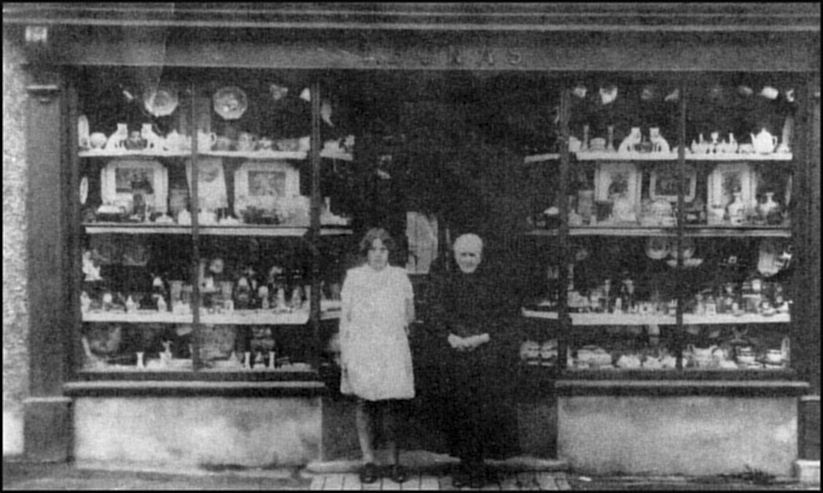 Mrs Annie Bonas outside her ‘Pot Shop’ near the canal
bridge in Measham where the teapots could be ordered and bought, ca 1900.
Mrs Annie Bonas outside her ‘Pot Shop’ near the canal
bridge in Measham where the teapots could be ordered and bought, ca 1900.
Source: Measham Museum and
History Group
Betsy was born in Thrupp in 1851, probably on a canal boat — the daughter of John Humphris,
age 32, a boatman from Eynsham; and his wife, another Elizabeth, age 31, who was born in
Kirtlington. The family was then living in Jericho Gardens near the canal in Oxford. They
already had three children, all born in Eynsham, and John came from an extensive family of
boatmen from Eynsham and Thrupp. The 1871 census shows that the family, excluding Betsy, were
living on the boat ‘Sarah Ann’ on the Oxford Canal near Monks Kirby/Stretton-under-Fosse,
between Coventry and Rugby. 10 years later both John and his wife were in the Oxford Workhouse
on the Cowley Road where John died in 1883, while his wife was still alive in 1891.
In 1877, Betsy married Benjamin Johnson at St Barnabas church in Oxford, by the canal in
Jericho. He was a boatman too and probably born in Thrupp. On the day of the census in 1881 they
were living on a barge at Canal Cutt End on the Ashby Canal near Measham where the teapot was
made, and 10 years later at Bath Landing Stage, also on the Ashby Canal. In 1901 they were on a
boat in Neithrop in Banbury. Benjamin died in 1916 and Betsy in 1926, in Woodstock, probably in
the workhouse.
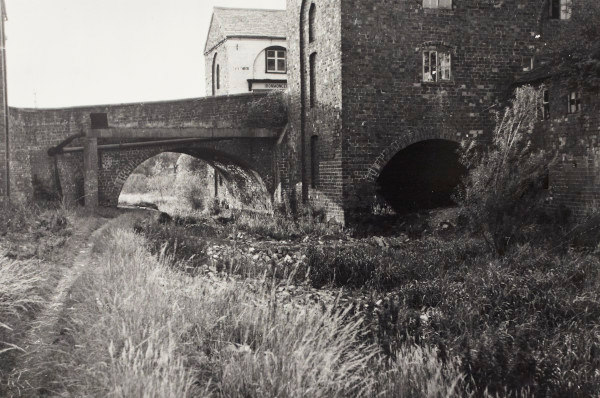 The Ashby Canal at Measham, ca 1900.
The Ashby Canal at Measham, ca 1900.
Source: Canal & River Trust, Photograph Collection, BW192/3/2/2/1/9
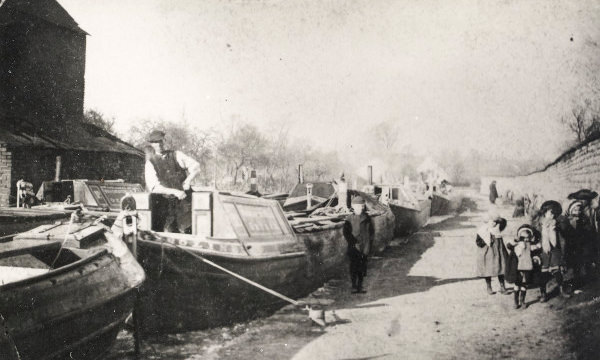 Horse-drawn boats at Neithrop, Banbury, ca 1910?
Horse-drawn boats at Neithrop, Banbury, ca 1910?
Source: Canal & River Trust, Photograph Collection, BW192/3/2/2/1/9
The circumstantial evidence that Betsy was the donor of the teapot is strong and there seems to
be no male E. Humphres who fits the bill, but if it was Betsy she would surely have used her
married name, Johnson, in the dedication to Miss Sharp. However, it was common practice among
canal women to continue to use their own names after marriage.
Betsy and Miss Sharpe
The question, then, is how might Betsy and Miss Sharpe have met? The answer is: probably
through coal. In the severe winter of 1894/95 Miss Sharpe distributed 2 cwt of coals to each of
the poor families of Tackley on at least two occasions (Oxfordshire Weekly News,
6/3/1895). She would have obtained the several tons required from the coal yard at Enslow Wharf
on the canal, where canal boats unloaded large quantities of coal from the Midland coalfields,
including the collieries around Measham. The coal was for domestic use in the surrounding
villages and Woodstock, for steam-driven agricultural machinery and for the lime kilns in the
area, of which there were at least two in Tackley — one at Quarry Bank by Enslow Bridge, the
other in Waterleys Copse just outside the northern boundary of the parish. From 1907 even larger
quantities were unloaded at the new Oxford Portland Cement Company works at Washford Pits on the
Kirtlington bank of the canal just north of Pigeon’s Lock. The coal would have been brought up
to the village probably by the local carter, John Broom, who lived in Nethercott
(Oxfordshire Weekly News, 28/5/1890). Betsy and her husband’s boat was part of this
coal trade and Betsy would have worked the boat and unloaded coal just as Jean Humphris (holding
the barrow) was photographed doing in 1956 at the Juxon Street Wharf in Jericho, Oxford. Jean
Humphris was probably related to Betsy.
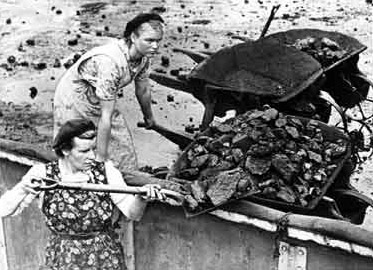 Source: Picture Oxon,
POX0104070
Source: Picture Oxon,
POX0104070
Given the domestic importance of coal, Miss Sharpe would probably have done business with
Enslow Wharf over the years and either she or other local temperance campaigners probably
visited the wharf — and especially the Rock of Gibraltar pub, which was much used by boatmen and
had a reputation. Betsy may therefore have met Miss Sharpe at the wharf, or she (and her
husband) may have been persuaded to come up to Coffee Lodge.
Why the gift of a pot? We don’t know — and the date of the dedication, 11 March 1898, doesn’t
give us a clue. But Measham Ware pots were significant gifts among canal families, and Miss
Sharpe had been recognised for her philanthropy a few years earlier at the Christmas supper at
Coffee Lodge when she was presented with a pair of Japanese vases, “for which the lads of
Tackley liberally subscribed” (Oxfordshire Weekly News, 3/1/1894).
After she gave up running the lodge at Christmas 1899 there are no further mentions of it in
the local press and we have no idea whether or not it continued, but Miss Sharpe continued her
philanthropy, especially towards the sick. The last mention of her was in July 1920 when she
held a concert in the garden of her house, Beth-Oni, on the Green, in aid of providing a cot for
a wounded soldier at the Radcliffe Infirmary (Oxfordshire Weekly News, 7/7/1920).
The house had a certain notoriety: between 1905 and 1908 she claimed that it was inhabited by a
poltergeist, which was exorcised by the Rev Fitzgerald on 21 February 1908. She published an
account of it in 1914, A Disturbed House and its Relief: A Narrative of Certain
Occurrences at ‘Beth-Oni’, Tackley, Oxon, 1905–1908, a copy of which is in the History
Group archive.
For all her good intentions and extensive philanthropic work, she was a divisive character. The
Victoria County
History chapter on Tackley notes that church life declined in the later years of her
father’s incumbency and there was considerable dissension in the parish in 1890, caused in part
by the way she managed the choir. Perhaps she was the anonymous person who wrote to The
Oxford Times (17/6/1893): “A correspondent complains of the scandalous gossip prevalent
in this village, and declares that now a decent and respectable female cannot walk through the
village without being called disgusting names.” Her 1891 pamphlet, Village Gossip
Investigated, might be an interesting read. The Bodleian Library has a copy.
Two women with parallel but very different lives that coincided in Tackley.
The local papers on which this article is based come from the enormous collection held by the
British Library. They can be accessed
online. Unfortunately, the library charges (about £9 per month) for access to this public
national collection, but there is a wealth of information there to enjoy.
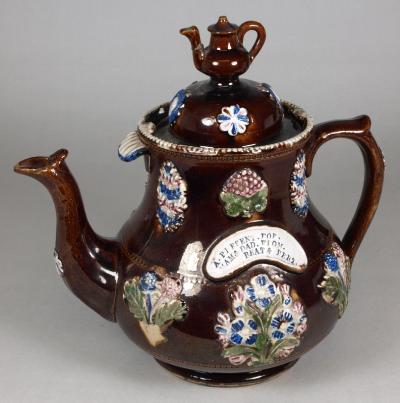 What Miss Sharpe’s teapot would have looked like when she received it
What Miss Sharpe’s teapot would have looked like when she received it
More Stories From Our Past